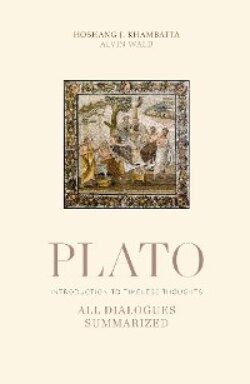Читать книгу PLATO - Hoshang Khambatta - Страница 10
Preface
ОглавлениеPlato is considered to be one of the greatest philosophers of all times, and many consider him to be the father of philosophy. He was born in Athens in 427 B.C.E. into a rich, aristocratic family and he died in 347 B.C.E. at the age of 81. In his late teens or early twenties he began to frequent a circle of Athenian thinkers led by Socrates. If Plato is the father of philosophy, then Socrates, who died in 399 B.C.E. when Plato was 28 years old, would be the grandfather. Socrates’ death had a tremendous influence on Plato who then traveled the known world and engaged with other philosophers. No original works of Socrates have survived, and what we know of him today is found in Plato’s writings. In 380 B.C.E. Plato opened a school of higher education in the sacred groves of Academus in the Attic country-side near Athens. He offered lessons in mathematics, politics and philosophy. Under his leadership this academy became a major institution, attracting leading scholars from all over Greece. Aristotle attended as a student in 367 B.C.E. and remained as a teacher up to the time of Plato’s death.
Plato began to write after Socrates’ death and continued for the next 50 years until his own death. These writings are in the form of dialogues. Plato and Socrates are not handing down truth. They are encouraging you to think for yourself by considering the available alternatives. Socrates and Plato did not believe that they had new knowledge to hand down, they wanted readers to reason and think and reflect on how to improve themselves. Truth is attained if one takes time to think; it is not a personal revelation for which a person can claim credit. Plato never appears in the first person in his dialogues. What he writes he credits to others, and he makes no claims to absolute wisdom. Truth must be arrived at by each of us on our own; we must gain the capacity to interpret and reinterpret. This is where Socrates and Plato differ from earlier philosophers, known as Sophists, who made claims to possess wisdom and truth that they would impart to their followers.
We do not have Plato’s work in the original. It is available as dialogues from transcriptions made and compiled by Thrasyllus, who came from the Greek city of Alexandria in Egypt. He was an astrologer and Platonist philosopher in the first century C.E., nearly 400 years after Plato’s death. In essence, Thrasyllus was responsible for the first edition of Plato’s complete work gathered together in one place. For some of the dialogues, the authenticity of Plato’s authorship has been challenged. Thrasyllus included these, even though he called them spurious. We, too, have included them in this volume. In the recent past the authenticity of a few more dialogues has been challenged by scholars, and we have made a note of that in this publication. While we have no knowledge of the order in which the original dialogues were written, Thrasyllus arranged them in a thematic fashion, and we will follow that order. Though we have numbered the dialogues in this volume, there is no chronological significance to the order in which they are numbered and presented. Regards the order we have followed the lead of classical scholars. The numbering has been done for easier access. The first four dialogues are known as the Socratic dialogues and have a theme of justice and legislation. There is then another group in which Plato introduces his theory of Forms. This is the concept of eternal non-physical knowledge that is obtained by abstract thought.
The lessons of Plato and Socrates are just as valid today as they were two-and-a-half thousand years ago. This book is directed at the novice, a teenager who has reached an age of understanding or an adult who has not been exposed to ancient Greek philosophy, but has a desire to learn. We hope that readers of this book will have the curiosity to consult the original texts, albeit in translation. If this hope becomes a reality, then our mission will have been fulfilled. However even if our efforts here only produces an interest in or appreciation of philosophy, we will be satisfied. All of the dialogues in our volume are preceded by a short “overview” to facilitate reading. The overview is then followed by a shortened version of the original dialogue, which is our interpretation, in which we have tried to maintain the feel, and semblance of the original dialogue format.
Hoshang J. Khambatta
December 2015
